Hidden within the tranquil pine forests of Da Lat, Nguyen Huu Hao Tomb stands as a remarkable yet often overlooked treasure that deserves a spot on your list of unusual things to do in Da Lat. This historical site, surrounded by vibrant greenery and the golden blooms of wild sunflowers, exudes a peaceful charm that captivates visitors. Despite its rich history and cultural significance, Nguyen Huu Hao Tomb remains a lesser-known gem, offering an ideal escape for those who wish to immerse themselves in Da Lat’s serene beauty and uncover its fascinating past.
If you’re planning your next adventure to this dreamy highland city, Nguyen Huu Hao Tomb promises not only a journey through history but also a rare opportunity to connect with the untouched, natural allure of Da Lat. Prepare to be enchanted by the harmonious blend of history, nature, and tranquility that makes this hidden gem an unforgettable experience.
Location of Nguyen Huu Hao Tomb in Da Lat
Address: Van Thanh Street, Ta Nung, Da Lat City
Opening Hours: Open every day of the week
Entrance Fee: Free
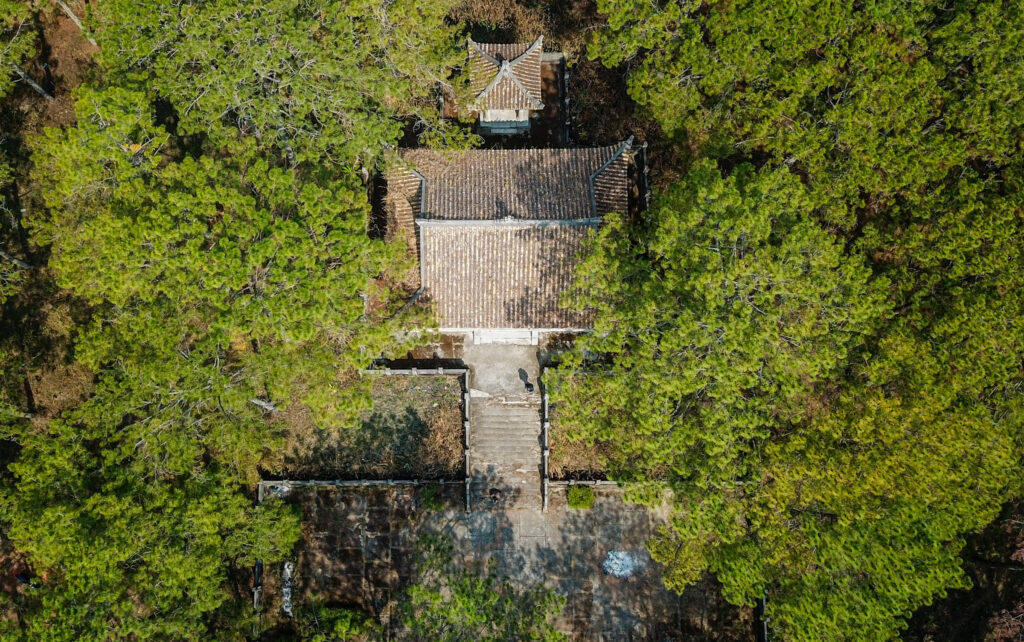
Nestled peacefully on a breezy 16-hectare hill in the romantic city of Da Lat, Nguyen Huu Hao Tomb is a fascinating architectural relic tied to the Nguyen Dynasty. This historic site joins the ranks of Da Lat’s other well-known heritage landmarks, such as Bao Dai Palace 1, Palace 2, Palace 3, and the Nam Phuong Queen’s Private Residence, making it a significant cultural and historical treasure.
Despite its historical and cultural importance, Nguyen Huu Hao Tomb remained relatively unknown for years, overshadowed by Da Lat’s more famous attractions. However, in recent years, as travelers seek out unique and off-the-beaten-path destinations, the tomb has emerged as a must-visit site. Its serene, picturesque setting and timeless atmosphere make it an enchanting addition to any Da Lat itinerary. Visitors are drawn to its tranquil beauty, where nature and history harmoniously blend, offering a peaceful retreat from the bustling tourist spots in the city.
Whether you’re a history enthusiast or simply someone looking to explore Da Lat’s lesser-known gems, Nguyen Huu Hao Tomb promises an unforgettable experience filled with discovery and reflection amidst its lush, dreamlike surroundings
How to Get to Nguyen Huu Hao Tomb in Da Lat
Located just aroung 4 kilometers west of Da Lat’s city center and near the scenic Cam Ly Waterfall, Nguyen Huu Hao Tomb is easily accessible by various means of transportation. Whether you choose to ride a motorbike, drive a car, or hop into a taxi, the journey is quick and straightforward. A one-way trip typically costs around 50,000 VND. For the adventurous and eco-conscious traveler, cycling is a fantastic way to explore this picturesque route.
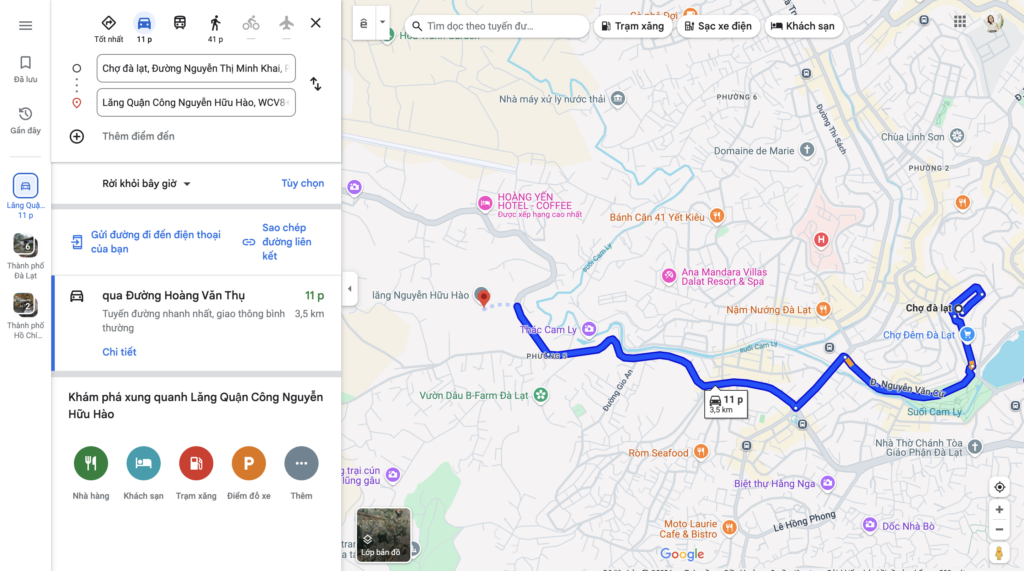
To reach Nguyen Huu Hao Tomb, start your journey from the bustling Da Lat Market. Travel along Nguyen Van Cu Street, then head through 3 Thang 2 Street and continue onto Hoang Van Thu Street. When you reach the fork that leads to Van Thanh Flower Village, bypass it and keep moving straight. A short distance ahead, you will see the entrance to the tomb.
One thing to keep in mind is the road leading up to the tomb. Made of stone, it is best suited for motorbikes and bicycles. If you’re driving a car, parking at the entrance gate and walking up is the most practical option. The walk is not too far and provides an excellent opportunity to enjoy the serene surroundings before arriving at this historically rich site.
No matter how you choose to travel, the journey to Nguyen Huu Hao Tomb offers a delightful blend of natural beauty and cultural discovery, making it an unmissable experience in Da Lat.
The History of Nguyen Huu Hao Tomb in Da Lat
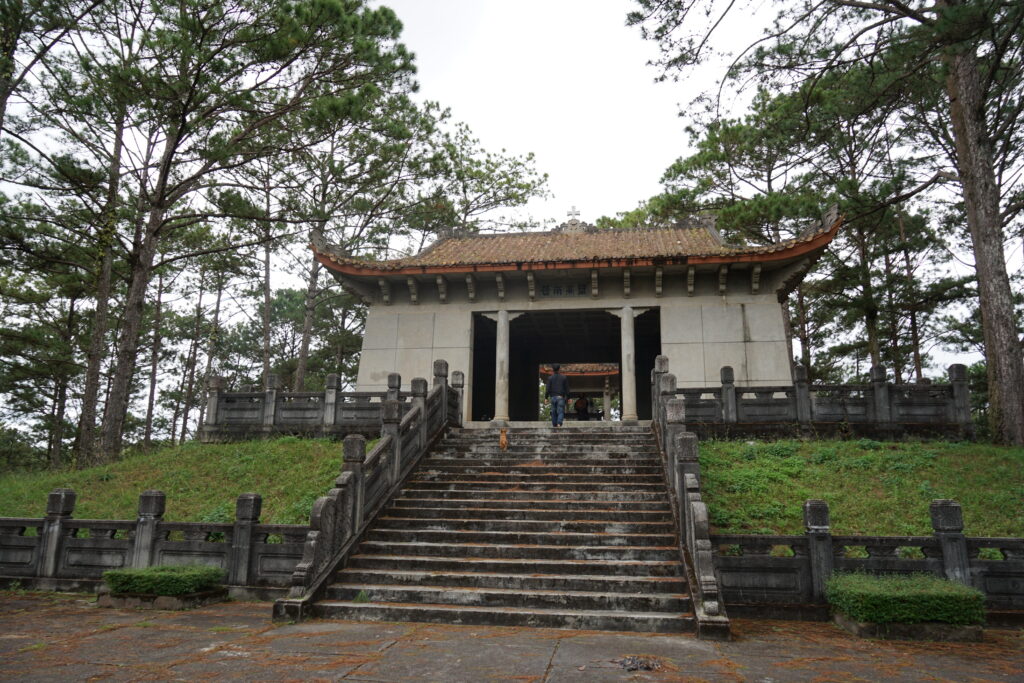
Nguyen Huu Hao Tomb serves as the final resting place of Nguyen Huu Hao, the father of Nam Phuong Empress—the wife of Emperor Bao Dai—and his wife, Le Thi Binh. Perched on a serene hill to the southwest of Da Lat City, the tomb is part of the Cam Ly Waterfall scenic complex, officially recognized as a national historical and cultural site by the Ministry of Culture and Information in 1998.
According to historical records, Nguyen Huu Hao was a wealthy landowner originally from Go Cong, now part of Tien Giang Province. He married Le Thi Binh, the daughter of Huyen Sy (Le Phat Dat), one of the richest men in Vietnam at the time. Their daughter, Nguyen Huu Thi Lan, later became Nam Phuong Empress after marrying Emperor Bao Dai. Following their marriage, Nam Phuong Empress brought her parents to live in Da Lat, where they spent their remaining years.
During the final days of his life, Nguyen Huu Hao rarely returned to his hometown of Go Cong, preferring the tranquil surroundings of Da Lat. When he fell gravely ill, his last wish was to be buried in this idyllic city. To honor his wish, Nam Phuong Empress commissioned the construction of the tomb in late 1939. Emperor Bao Dai and the Empress personally oversaw the construction, which lasted four years, creating an imposing and dignified resting place for her parents.
Situated on a sprawling 4-hectare hill, the tomb was built to reflect the grandeur of its time. While the Cam Ly Waterfall area has been actively managed and opened to tourists, Nguyen Huu Hao Tomb has yet to receive the restoration and development it deserves. As a result, the tomb remains a tranquil and mysterious landmark, hidden amidst the pine forests and often overlooked by visitors.
This blend of historical significance and natural serenity makes Nguyen Huu Hao Tomb a hidden gem for those seeking to delve deeper into Vietnam’s royal past and its cultural heritage.
Fascinating Facts About Nguyen Huu Hao Tomb in Da Lat
Nguyen Huu Hao Tomb: A Feng Shui Masterpiece
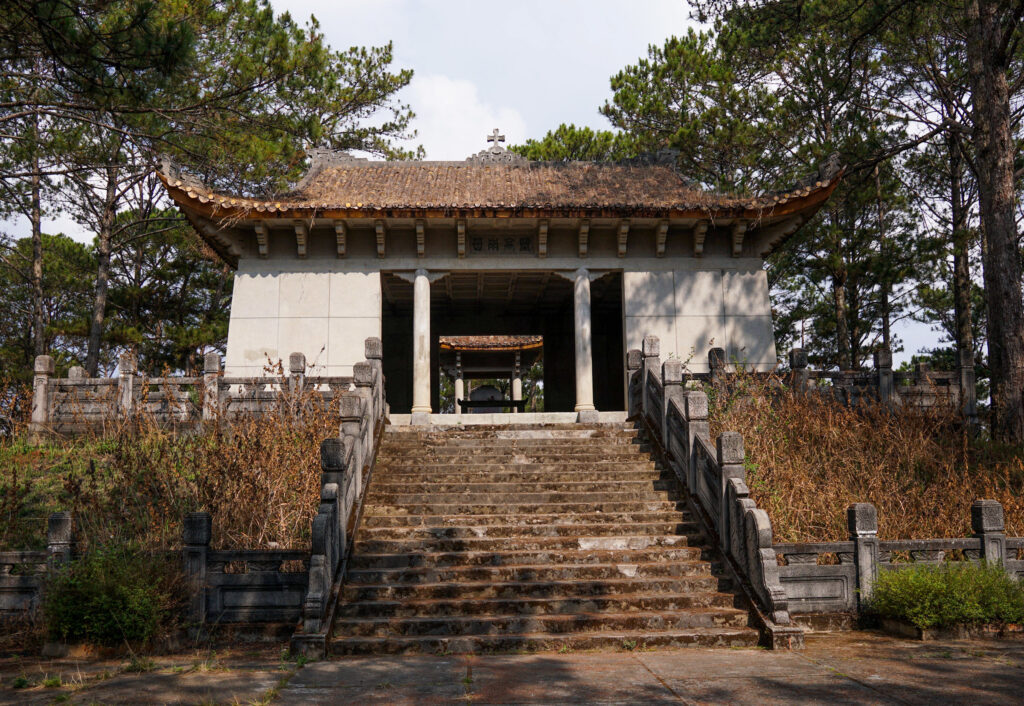
The hill chosen for the construction of Nguyen Huu Hao Tomb in Da Lat is steeped in feng shui traditions, believed to embody a “dragon vein” (long mach).
When it became evident that Nguyen Huu Hao’s health was failing, Emperor Bao Dai and Nam Phuong Empress enlisted renowned feng shui masters to select an ideal site for his final resting place. After careful consideration, they chose a towering hill to the southwest of Da Lat City. Spanning 4 hectares, this serene hill is surrounded by majestic pine forests and faces the famous Cam Ly Waterfall, creating a perfect harmony of natural beauty and spiritual significance.
The positioning of the tomb was meticulously planned. The entrance faces the city center, symbolizing a connection between the resting place and the lively heart of Da Lat. This attention to feng shui principles reflects the deep respect and care the royal family held for Nguyen Huu Hao, ensuring his eternal peace in a location of utmost balance and serenity.
This unique blend of nature, history, and feng shui philosophy adds an intriguing layer of mystique to Nguyen Huu Hao Tomb, making it a must-visit destination for history enthusiasts and cultural explorers alike.
Imperial Hue-Style Architecture in Nguyen Huu Hao Tomb
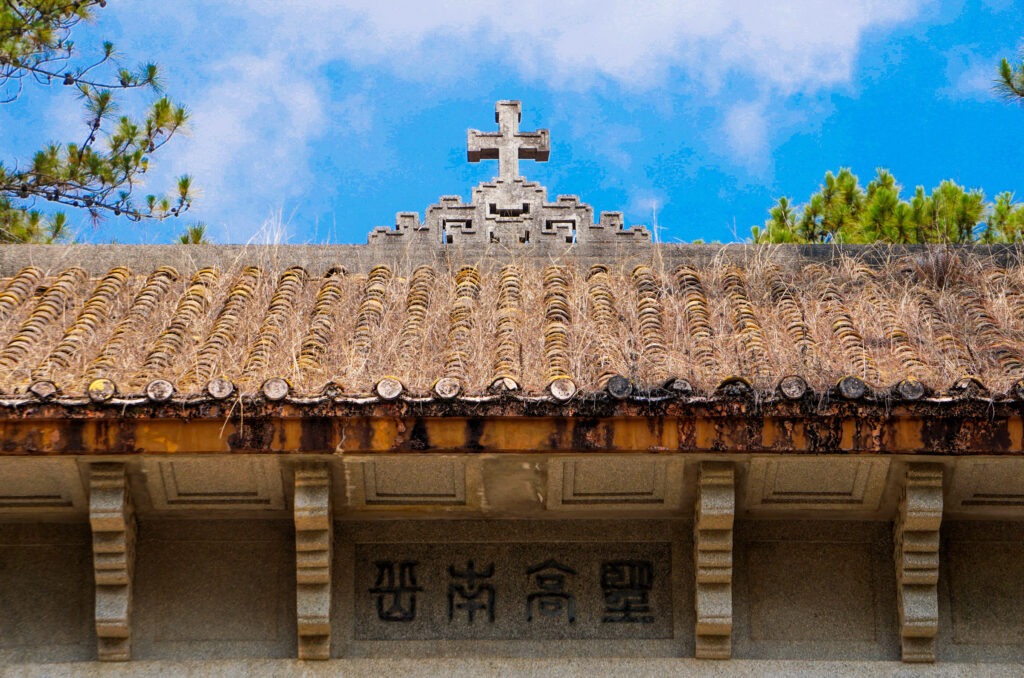
Among the relics of the Nguyen Dynasty still standing in Da Lat, Nguyen Huu Hao Tomb uniquely embodies the grandeur and elegance of Hue’s imperial architecture. This regal structure serves as a remarkable blend of Da Lat’s charm and the stately heritage of Vietnam’s former imperial capital.
The main tomb is constructed entirely of rendered stone and bricks, following the distinctive style of Hue’s royal court. Its roof, made of reinforced concrete, gracefully arches outward and is adorned with glazed ceramic tiles (ngói lưu ly), exuding a sense of both durability and grace. At the peak of the roof stands a cross, honoring the faith of the late Duke, Nguyen Huu Hao.
The design pays homage to Eastern aesthetics, with four intricately curved roof edges symbolizing the petals of a blooming lotus flower—a subtle yet profound representation of purity and spiritual peace. This unique design preserves the tomb’s sense of elegance while maintaining the solemnity required of a sacred space.
The entrance to the tomb adds to its grandeur, with four imposing vertical pillars adorned with lotus motifs and crowned by stylized Tibetan mastiffs. Adjacent to these pillars are poetic couplets personally inscribed by Nam Phuong Empress, adding a personal and royal touch to the tomb’s already captivating architecture.
This magnificent blend of tradition, spirituality, and artistry makes Nguyen Huu Hao Tomb not only a resting place but also a striking cultural landmark that resonates with visitors seeking to uncover the layers of Vietnam’s royal heritage amidst the serene beauty of Da Lat.
The 158-Step Pathway to Nguyen Huu Hao Tomb
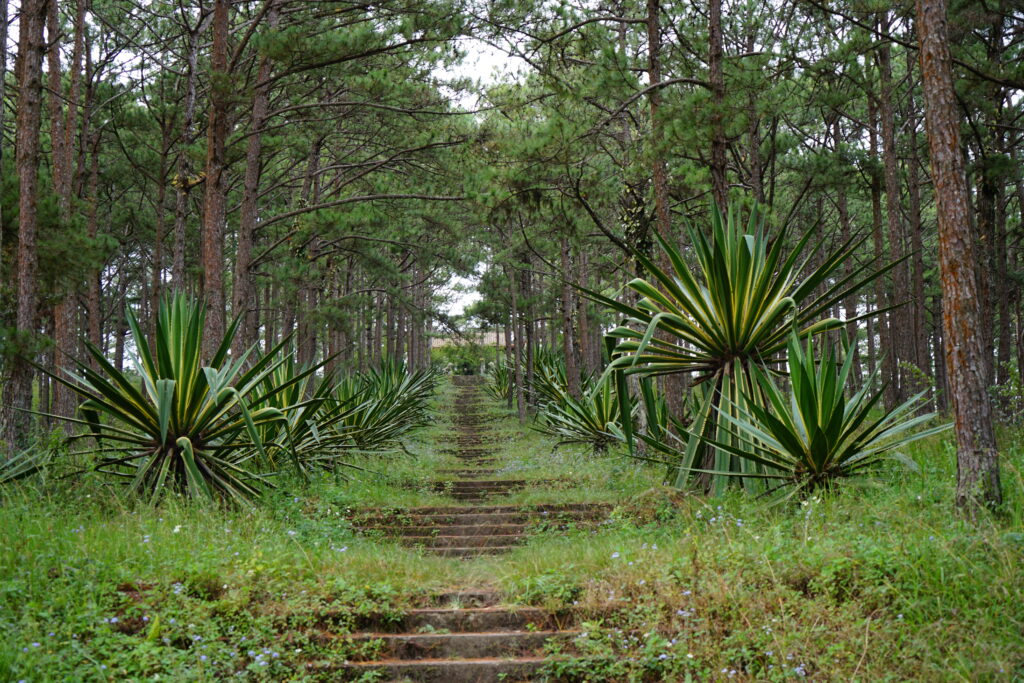
To reach the Nguyen Huu Hao Tomb in Da Lat, visitors must traverse the only access route: a 158-step staircase aptly named Nhat Chinh Dao (The True Path). This path leads straight from the main gate with a moderate incline, ensuring that it is accessible to all while maintaining a solemn and serene atmosphere.
What makes this staircase special is its thoughtful design. Every 9 to 13 steps, a resting platform is incorporated, allowing visitors to pause, reflect, and appreciate the tranquil surroundings before continuing their journey.
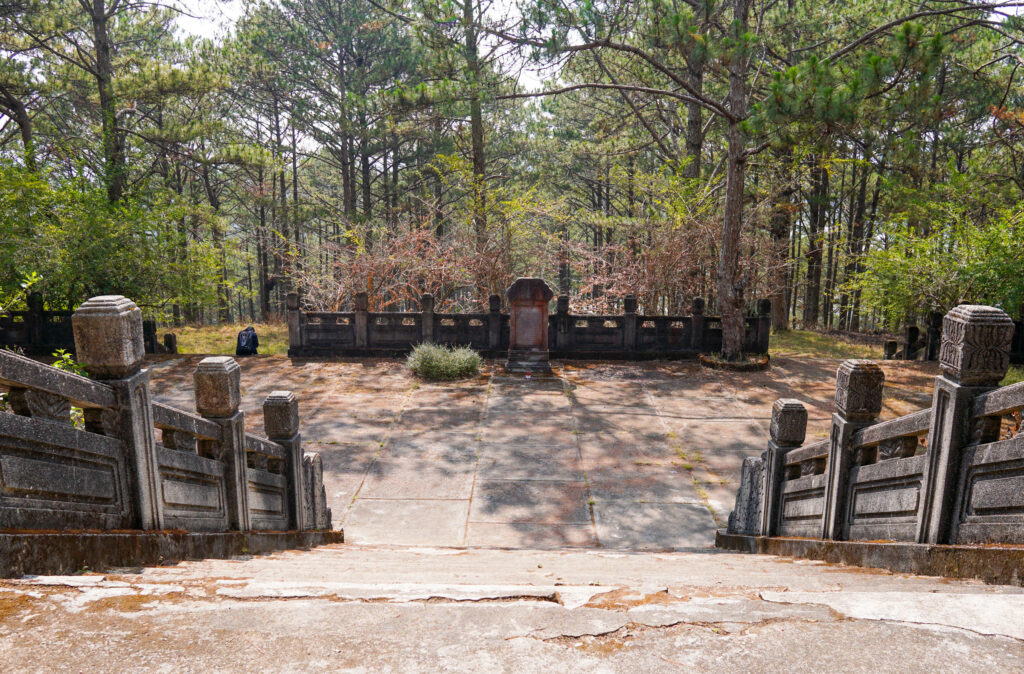
To arrive at the tomb’s central area—the final resting place of Duke Nguyen Huu Hao and his wife, you’ll pass through a ceremonial courtyard. From there, an additional 13 steps will bring you to the Sàn Chầu (The Ceremonial Courtyard) before ascending the final 20 steps to the heart of the tomb.
This journey, marked by the gradual climb and resting spots, mirrors a pilgrimage, heightening the spiritual connection visitors feel as they approach this historic and sacred site. The Nhat Chinh Dao is not just a staircase but a symbolic passage, inviting reflection and reverence for the lives and legacies it commemorates.
The journey itself is a breathtaking experience, flanked by towering pine trees standing tall and orderly on both sides of the path. During the blooming season, the golden hues of wild sunflower (hoa dã quỳ) clusters and moss-covered steps add a touch of vibrant beauty to the serene, timeworn atmosphere.
The stairway, though steeped in the quiet solitude of the past, retains a commanding aura of dignity. It creates a harmonious blend of natural beauty and architectural heritage, making the ascent to Nguyen Huu Hao Tomb an unforgettable part of the visit.
Green Stone Artistry at Nguyen Huu Hao Tomb

The graves of Nguyen Huu Hao and his wife, Lady Le Thi Binh, are set side by side within the central chamber of the tomb. Both graves are crafted entirely from monolithic green stone, a material chosen not only for its durability but also for its timeless beauty. The surface of the tombs is adorned with intricate carvings and decorative motifs, reflecting the couple’s aristocratic heritage and exuding an air of dignity and refinement.

Between the two graves once stood an offering table, also sculpted from green stone, further enhancing the grandeur of the tomb. Unfortunately, this original piece was stolen and has since been replaced with a cement replica during restoration efforts. Despite this loss, the surrounding green stone craftsmanship continues to speak volumes about the skill and artistry of its creators.
Within the tomb are also two stone inscriptions, or văn bia, commemorating the profound contributions and legacy of Nguyen Huu Hao. These inscriptions, erected by his daughters, stand as a heartfelt tribute to the enduring gratitude and respect they held for their parents.
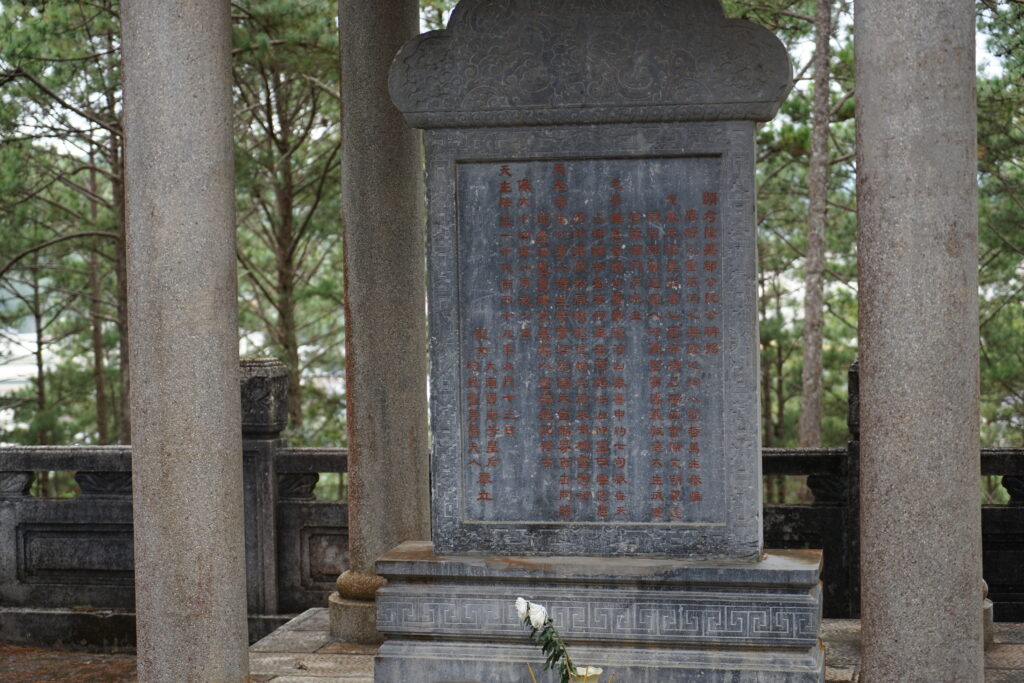
The use of green stone throughout the tomb not only adds to its visual allure but also symbolizes the enduring legacy of a family whose story remains etched in both history and the heart of Da Lat’s cultural landscape.
Tips for Visiting Nguyen Huu Hao Tomb
To ensure a meaningful and enjoyable visit to the Nguyen Huu Hao Tomb, here are some tips to keep in mind:
- Plan Your Visit During the Dry Season
The best time to visit is from November to March, when Dalat experiences its dry season. The pleasant weather will make the climb to the tomb more comfortable, and you can fully enjoy the scenic beauty of the surrounding pine trees and blooming wild sunflower (dã quỳ flowers). - Wear Comfortable Shoes and Clothing
With 158 steps to climb, comfortable footwear is essential for navigating the pathway. Opt for lightweight, breathable clothing to stay comfortable, especially if you’re visiting during midday when the sun is at its peak. - Visit Early Morning or Late Afternoon
To avoid the heat and crowds, plan your visit in the early morning or late afternoon. These times offer cooler weather and a more peaceful atmosphere, allowing you to immerse yourself in the tranquil beauty of the site. - Respect the Sacredness of the Site
As the tomb is a place of historical and cultural reverence, maintain a respectful demeanor throughout your visit. Avoid loud noises, refrain from littering, and show respect for the cultural significance of the location. - Bring Offerings or Essentials
If you wish to pay your respects, consider bringing a small offering, such as incense or flowers, to place at the altar. Additionally, bring essentials like a bottle of water and a hat to stay hydrated and protected from the sun, especially during your climb.
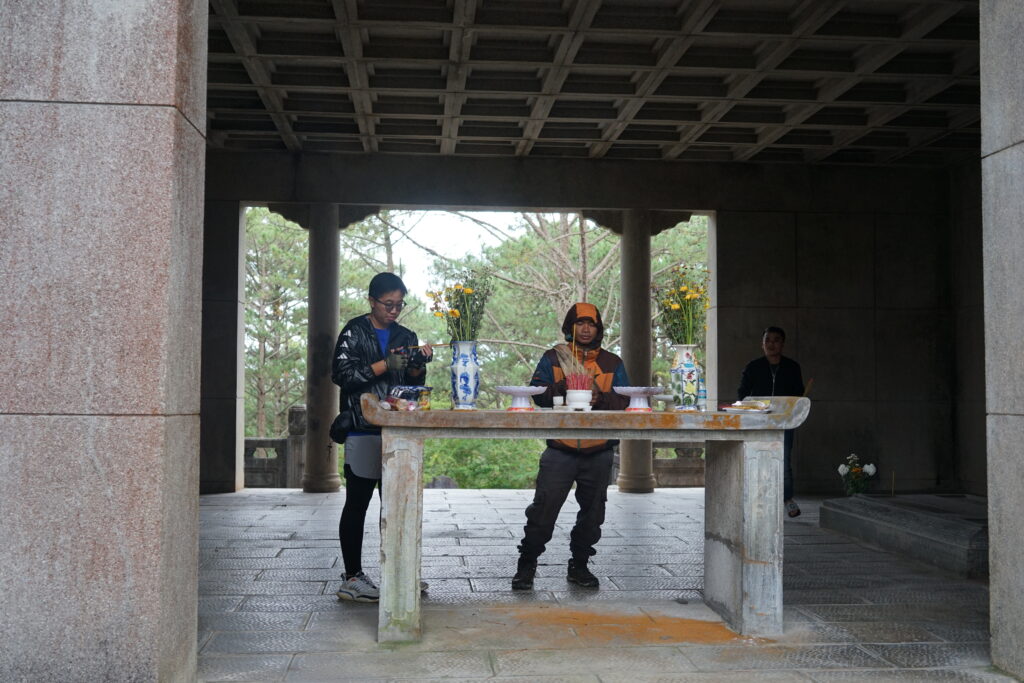
By following these tips, you’ll not only enjoy your visit but also show appreciation for the rich history and serene beauty of this remarkable site.
Let’s Explore the Hidden Gem of Dalat

The Nguyen Huu Hao Tomb is more than just a historical monument; it is a gateway to Vietnam’s rich cultural heritage and an intimate glimpse into the legacy of the Nguyen Dynasty. Whether you’re a history enthusiast, an architecture admirer, or simply someone seeking a peaceful retreat, the tomb is a must-visit destination in Dalat..
Embark on your journey to discover the secrets and beauty of this hidden gem in Dalat, and let Jackfruit Adventure enhance your experience. Join our cycling tours to explore Dalat’s enchanting landscapes and uncover even more of its hidden treasures, making your trip an unforgettable adventure.




